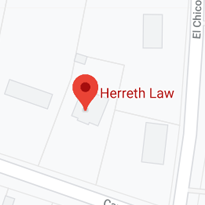Largely because of the extremely broad definitions in Texas Penal Code Section 49.04, “drugged driving” cases are more common than “drunk driving” cases in many jurisdictions. Under Texas law, any “substance” can cause intoxication. That substance could be an illegal street drug, like heroin, a prescription painkiller, like Oxycontin, an over-the-counter drug, like NyQuil, or a consumer product, like caffeine.
Don’t laugh about that last one. California has a similar drugged driving definition. In December 2016, officers arrested a driver for operating a vehicle under the influence of caffeine. Prosecutors later dropped those charges, but the driver still had to go through the legal wringer.
Many Weatherford DWI lawyers attack the evidence in drugged driving cases, because in most cases, this evidence is almost entirely circumstantial.
Field Sobriety Tests
When officers pull over motorists, they often immediately look for circumstantial evidence of drug use. Sometimes, they find pretty solid evidence, like an open pill bottle in the car. But typically, the consumption evidence is quite shaky. Officers often cite things like erratic driving or bleary eyes. However, that flimsy evidence is usually sufficient to move to the next level.
The next level usually means field sobriety tests. Officers sometimes use unapproved test, like the Romberg balance test. These tests may not hold up in court. So, the focus is on the three approved FSTs, which are:
- Horizontal Gaze Nystagmus: Using certain drugs causes the pupils to move involuntarily at certain angles. But many other things cause nystagmus, which is also called lazy eye. Common causes include a genetic abnormality and an early-childhood brain injury. So, many people may have nystagmus and not know it.
- One-Leg Stand: It is very difficult for anyone with any mobility impairment to stand on one foot for a prolonged amount of time whether they are high or not. It’s even more difficult if the defendant has already taken two or three tests and is already physically and mentally fatigued.
- Walk and Turn: Environmental conditions often affect this test, which is also called the Heel-to-Toe Walk test and the walking-a-straight-line test. Unless the defendant is wearing athletic shoes, it’s difficult to walk heel to toe without stumbling at least a little. It is also very difficult to walk an imaginary line.
For prosecutors to obtain a guilty verdict, the defendant must do extremely badly on the field tests. Marginal failures, like holding an elevated leg at the wrong angle or beginning the WAT with the wrong foot, usually do not hold up in court.
Blood Tests
There is no Breathalyzer test for drugs. So, if a chemical test is involved in a drugged driving arrest, it’s almost always a blood test.
To draw blood, officers must have search warrants based on probable cause. Many times, they have warrants, but no probable cause. Some officers skip the field sobriety tests and ask for blood tests based on the shaky circumstantial evidence, like erratic driving. Probable cause is a much higher standard of evidence. So, a Parker County judge may throw out the search warrant. If that happens, the blood test results are inadmissible in court.
Several defenses are available in drugged driving cases. For a free consultation with an experienced criminal defense attorney in Weatherford, contact Herreth Law. After-hours visits are available.

